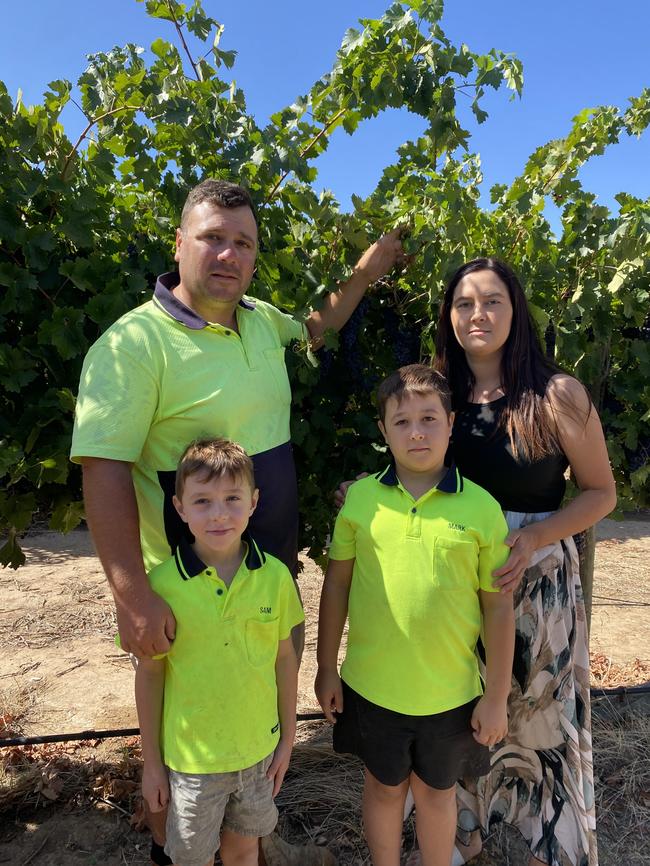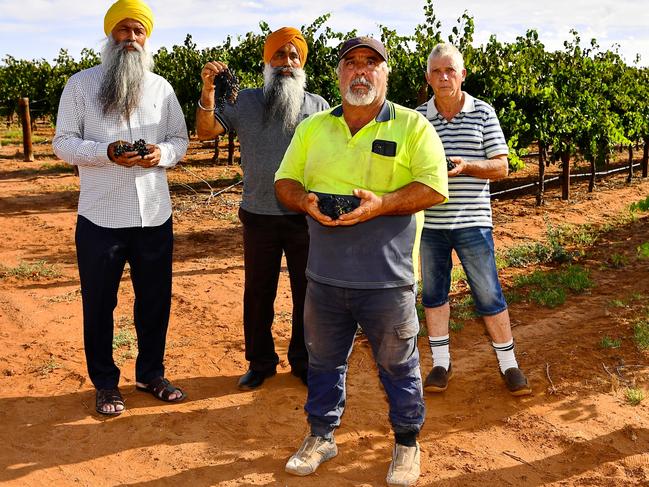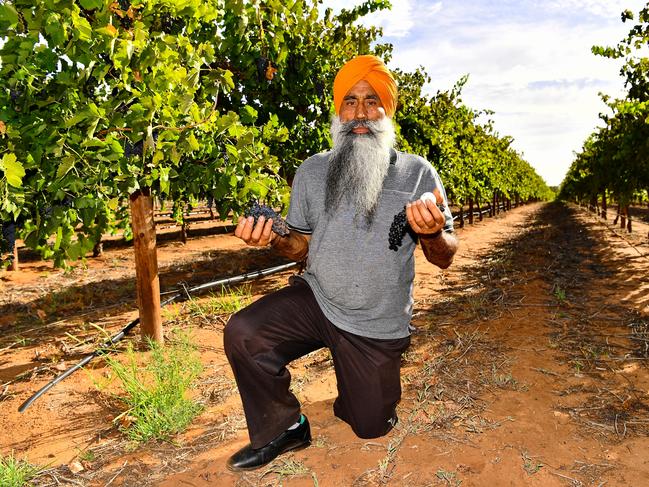Riverland grape growers call for state government support as prices plunge by nearly $500
Riverland grape growers are pleading for the government to help save the industry, with many struggling to break even.
SA Business
Don't miss out on the headlines from SA Business. Followed categories will be added to My News.
Hundreds of Riverland grape growers could lose their homes and livelihoods over the next few years with prices for the fruit plunging by nearly $500 a tonne over the past five years.
Growers were receiving about $600 a tonne in 2019 but that has dropped to as low as $120 in 2024.
Several growers told The Advertiser they were unable to break even for the first time ever, blaming punishing Chinese tariffs and changing consumer tastes for the drop.

Crisis talks were held by industry group Riverland Wine last Wednesday, with more than 175 growers calling for state government aid while they switch their crops to more popular varieties – a process that can take up to five years.
More than 600 people have signed a petition for a JobKeeper-style program to help Riverland growers, where the government would pay farmers to drop their grapes for the next two years and offer financial support to diversify crops.
With more than 500 growers in the region, most of them family businesses, the fertile Riverland supplies more than 60 per cent of the state’s red wine grapes and just over 30 per cent of Australia’s national supply.
However in 2021, when China introduced anti-dumping tariffs of more than 200 per cent on Australian wine, a $1.2bn market nosedived to just $8m in the last year.
Second-generation grower Jason Perrin, 66,said while tariffs were part of the problem, many grape growers wanted greater transparency on how prices were set, and are receiving only around 15 cents on each bottle sold.
“We live through this every day and what has happened in the last two years has been hell for us,” Mr Perrin said.
“It’s true the tariffs aren’t helping, but we only supply about two to eight per cent of the Chinese wine market.
“We keep hearing about oversupply but the bigger issue is there is not enough transparency between sellers and growers … smaller boutique wineries do it quite well but the big players don’t pass on information.”
Amanda Dimas, 32, married into a third generation grape-growing family and said she wanted to “leave a legacy” for her sons Marcus, 8, and Sam, 6.
“We love our job but we just can’t do it in these conditions,” Ms Dimas said.

In 2021, Ms Dimas and her husband Steve spent $60,000 planting cabernet vines, with assurances from wholesalers and wineries it would be in demand.
“We’ve been told by a lot of wineries that they just won’t accept red varieties for the next two to three years,” she said.
“Some growers around here spent $250,000 to start growing shiraz grapes – how can you even recoup those costs?”
Riverland Wine executive officer Lyndall Rowe said the past three years were “a perfect storm”.
“You also have this worldwide trend of people drinking different, lighter styles of wines,” Ms Rowe said.
“People are also less loyal to a category and are drinking a lot more spirits and different varieties.
“The people who are really feeling it now are these multi-generational businesses, who can’t sustain profitability.
“Around $300 a tonne is considered break even, but you’ve got some growers receiving $120 a tonne … imagine working seven days a week for 12 to 14 hours a day and not even being able to break even.”

Following Wednesday’s crisis meeting, Riverland Wine issued a list of farmers’ grievances and possible solutions in a letter to Premier Peter Malinauskas and Primary Industries Minister Clare Scriven.
It included the plea for a ‘WineKeeper’ program as well as immediate relief from utilities bills and council rates, and short-term loans.
Ms Scriven said she encouraged “clear and regular communications between growers and wineries” and the government had invested more than $2m in business support efforts and viticulture research targeting the region.
This includes the Riverland Wine Industry Blueprint, a $300,000 scheme to move the industry to sustainable production levels.
“Trade restrictions have been felt acutely, especially the loss of the huge China market following the former coalition federal government’s trashing of the trade relationship,” Ms Scriven said.
“It is clear there is no ‘silver bullet’ solution, multiple actions are needed and many are underway.”
After touring the region earlier this month, independent MLC Frank Pangallo referred the wine industry to the South Australian select committee on supermarket prices.
“Many growers have already decided not to harvest this year while others will need to decide what to do with their crops in the next few weeks,” Mr Pangallo said
“The growers I met with recently painted a very grim picture about their futures and that of the entire Riverland region,” he said.
“The state cannot afford to lose this crucial grape growing region which is a major contributor to the state’s $2.5 billion annual wine production value – the flow-on effects would be catastrophic.”




